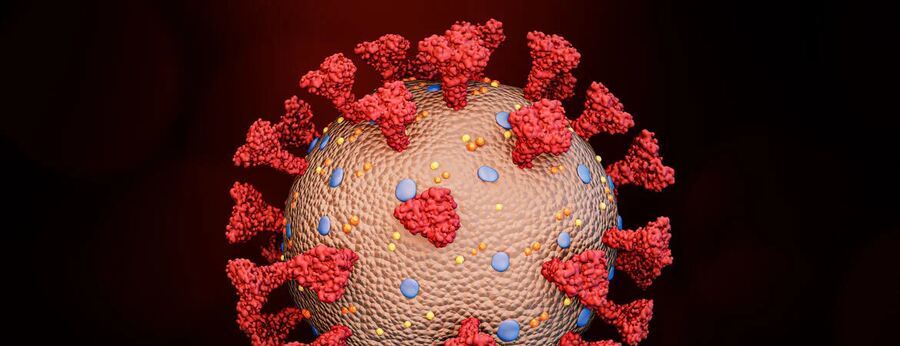Decoding the SARS-CoV-2 puzzle: Simulations reveal insights into M protein interactions

Scientists at the University of California, Riverside, have used supercomputer simulations to understand the role of a small protein, known as the Membrane protein or M protein, in shaping the SARS-CoV-2 virus into its distinctive spherical structure. The team's study details their approach to producing large quantities of M protein, characterizing its physical interactions with the viral membrane, and using theoretical modeling and simulations to paint a clearer picture of how these interactions contribute to the virus's spherical shape. 
The researchers have discovered that when the M protein becomes embedded in the membrane, it induces localized reductions in membrane thickness, triggering curvature and ultimately resulting in the virus's distinctive spherical shape. The team turned to Escherichia coli bacteria to produce the M protein, but they encountered a problem as the proteins tended to clump together leading to cellular death. To solve this issue, the researchers induced the E. coli cells to produce an additional protein called Small Ubiquitin-related Modifier (SUMO) alongside the M protein, which prevented unwanted protein aggregation.
This research holds broader implications for coronaviruses as M proteins are integral components of various coronaviruses, making these findings valuable in understanding viral formation and potentially identifying interventions not only for SARS-CoV-2 but also for other pathogenic coronaviruses. The team plans to expand their investigations to explore how M proteins interact with other SARS-CoV-2 proteins, to potentially disrupt these interactions using targeted drugs.
The study's success was due to the collaboration of diverse perspectives within the research team. The team plans to leverage the power of supercomputing simulations to provide critical insights that could aid in the development of effective antiviral strategies. By harnessing the power of diverse perspectives and cutting-edge computational tools, scientists move closer to decoding the intricate mechanisms of SARS-CoV-2 and developing targeted interventions that may help bring an end to the global crisis.

 How to resolve AdBlock issue?
How to resolve AdBlock issue?